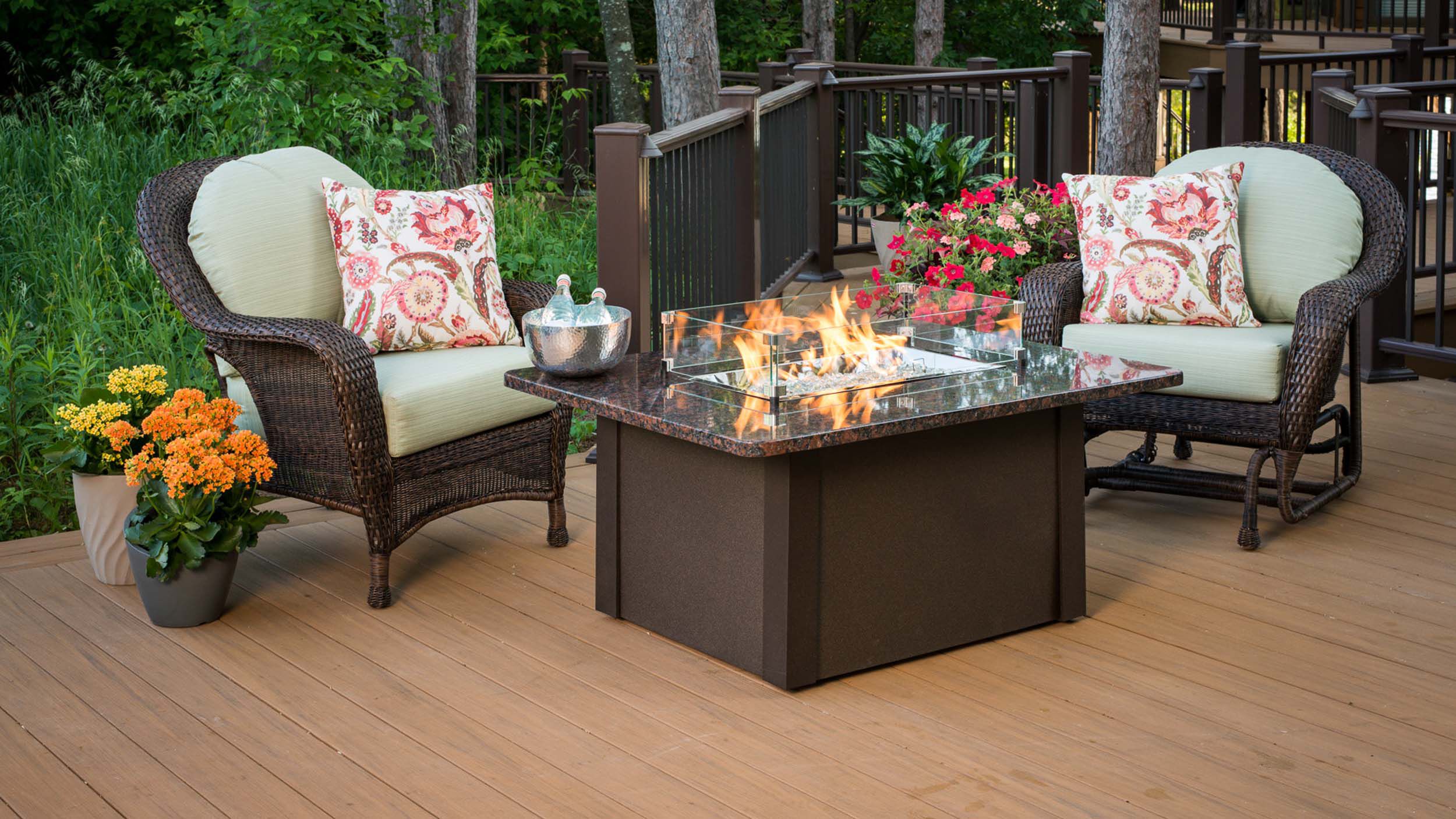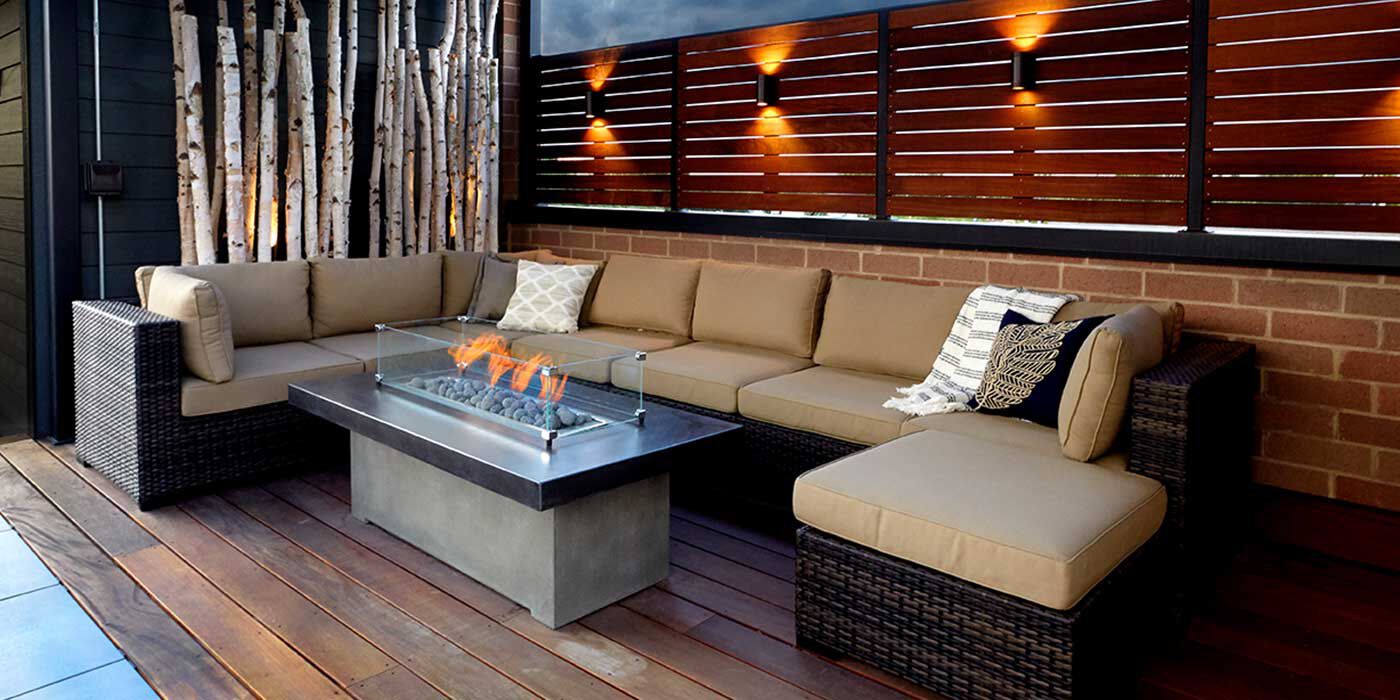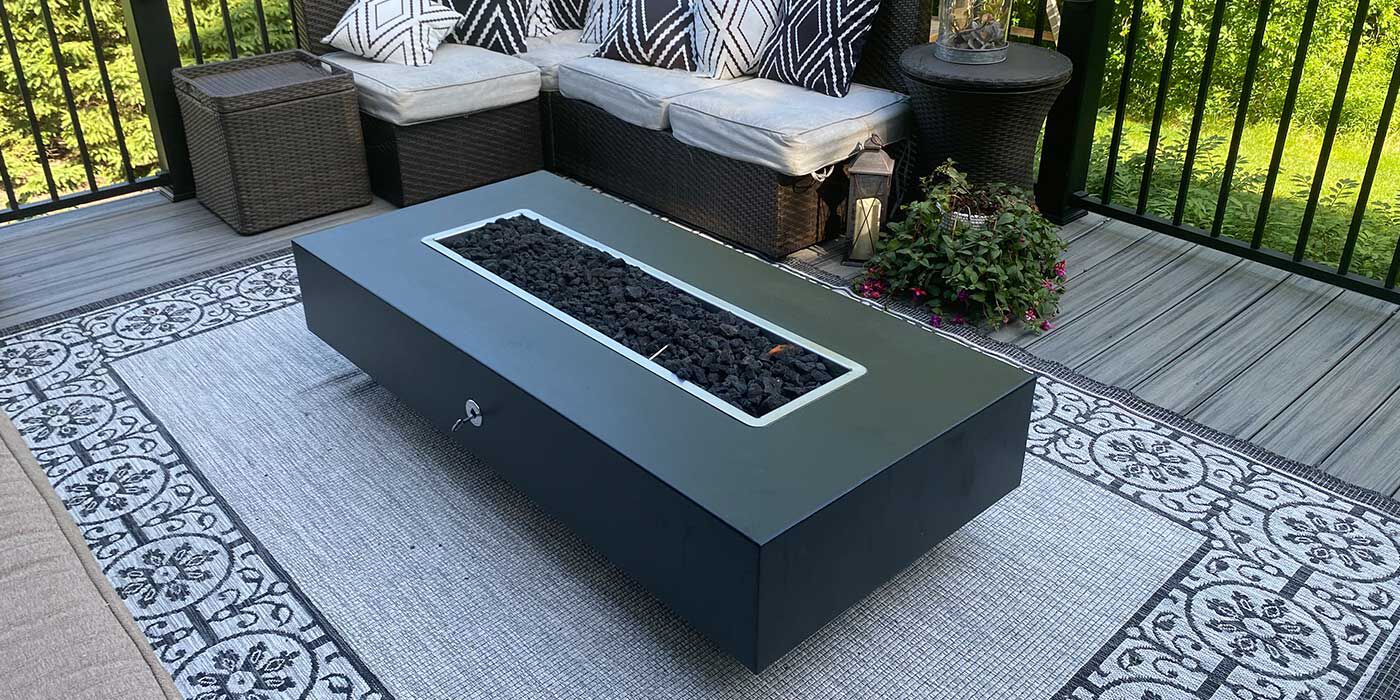By: Thomas Kearney, NFI Certified Master Hearth Professional
Last Updated: March 4, 2025
There aren’t many things better than sitting around a blazing fire with family and friends in the comfort of your backyard. But what if your yard is too small for an outdoor fire pit, and the only space available is on your deck?
You may be wondering if a fire pit is even possible, especially if you have a wood, composite, or vinyl deck. We're here to tell you that it is, depending on the type of fire pit you choose, where you want to install it in your outdoor space, and your city codes.
Ready to add ambiance to your landscape? In this article, we’ll cover six things you'll need to consider before installing a backyard fire pit. Read on to create a safe and cozy outdoor retreat you can enjoy year-round!
1. Gas vs Wood Burning Fire Pits
Typically, you can safely install gas fire pits on combustible decks. However, it's important to hire a gas professional to do the job. You'll also need to check the manufacturer requirements and your city’s codes before installation.
You cannot install a wood fire pit on a wooden, composite, or vinyl deck, unless it has been approved by the manufacturer and your city code.
You'll also need to place it on top of a non-combustible base or high-temperature fire pit mat that extends out at least 24 inches. Most homeowners opt for concrete or natural stone slabs.
The fireproof base is important because it prevents radiant heat transfer and stray sparks from damaging your deck boards or causing a fire.
Explore the differences between wood burning and gas fire pits here to choose the best style for your outdoor space.
Do you have your heart set on gas? Compare the benefits of Natural Gas and Propane fire pits here to narrow down your options.
2. Common Deck Surfaces
Wood

Wood decking is highly combustible. In most cases, we recommend purchasing a gas fire pit for your wood deck.
Most wood burning fire pits are not safe for wooden decks. Some, however, are pre-approved by the manufacturer.
Composite Material

Composite decks are also combustible. They're made from wood, wood particles, plastic, and recycled materials.
Popular examples of composite decking include Trex® and TimberTech® brands.
Vinyl

Vinyl decking is made from plastic and chlorine, also known as PVC, which is a combustible material.
Vinyl also expands easily and is likely to crack when exposed to excessive heat.
Concrete

Poured concrete slabs or stone pavers make great durable surfaces for decks.
Concrete and stone are non-combustible materials and will not catch fire, making them the best deck surface for a fire pit.
3. Check Your Fire Pit Installation Manual
When shopping for a fire pit, always consult the installation manual to make sure it will be a good fit for your space.
Manufacturers always detail the specific clearance and installation requirements you'll need to follow. Be sure to read through your manual before making a purchase. You can find most manuals on our website, listed on each product page.
For example, let's look at a section of the installation manual for the French Barrel Oak Cosmo Gas Fire Pit Table made by American Fyre Designs.
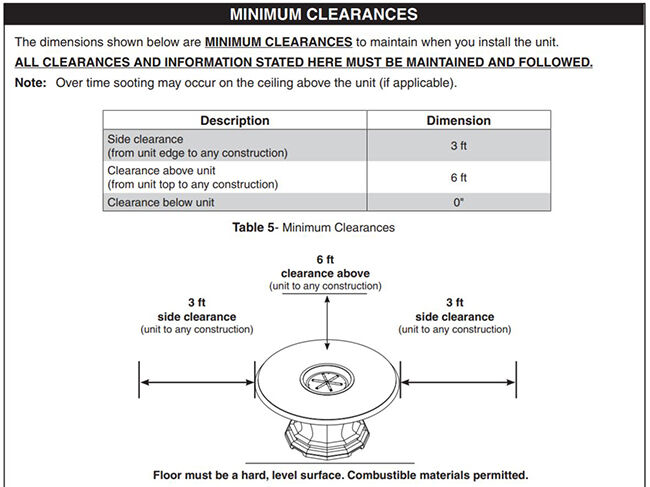
On the “Minimum Clearances” page of this manual, it says:
“Clearance Below Unit” is 0 inches and “Floor must be a hard, level surface. Combustible materials permitted.”
Both requirements verify that this gas fire pit table is safe to use on a combustible decks.
4. Weight Requirements
Fire pits can be heavy, especially if they require a stone base.
After choosing a fire pit and reviewing the manual, make sure your deck can handle the added weight.
First, determine the weight of your fire pit and any additional accessories needed. Add this to the weight of your outdoor furniture and maximum amount of people who will be on the deck at once. Compare this total to the maximum weight your deck can handle.
If you are unsure of your deck’s weight capacity, you will need to consult a structural engineer.
5. Research Your Location
Review the manufacturer's guidelines before placing a fire pit near flammable materials, as each one will be different.
In most cases, you need to keep your fire pit at least 20-25 feet away from your house and any other combustible structures, like sheds and pool houses. Plan for at least 3 feet of clearance on each side and 6 feet above your fire pit.
If you have an awning or overhang above your deck, you'll need to consider flame height and BTU output, too. You may even need to go for a model with a lower BTU output to ensure you have the proper overhead clearance.
6. Accessories for Safe Burning
There are a few accessories available to ensure a safe fire pit experience. These include spark screens and guards, covers, and non-combustible bases. It’s also a good idea to have a fire extinguisher nearby in case of emergencies.
Screens and spark guards
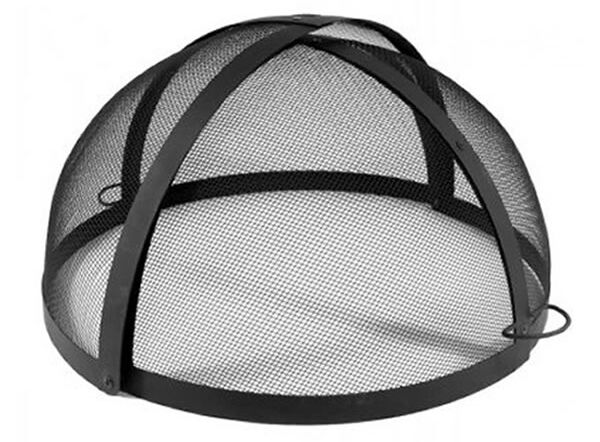
Screens protect your space from the open flames of a wood fire pit. It prevents sparks, embers, and ash from flying out and landing on your deck, furniture, decor, or surrounding debris, like dry leaves and sticks.
Most screens on the market are made of heavy-duty steel and mesh.
Metal or stone covers
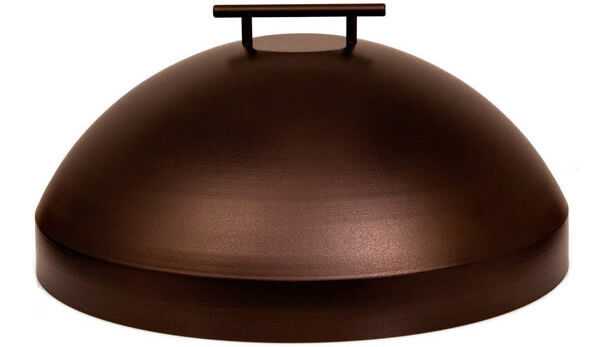
When not in use, covers prevent fire pits from sustaining unnecessary damage and offer protection from the elements.
Some manufacturers will require the use of a cover to validate the warranty.
Pads and bases
You can make a DIY fire pit pad from natural stone, pavers, or metal. This base protects your deck from high heat transfer and flying sparks.
Quick Recap
Before purchasing a fire pit for your deck, there are a few things you should consider.
- Take the proper safety precautions. Check the rules and regulations set by your city.
- Determine the maximum weight that your deck can support.
- Decide if you will need a base for your fire pit.
- Choose a few fire pits you like and read the installation manuals carefully to ensure they are suitable for your deck.
- Pick out any accessories you'll need to ensure a safe burning experience with friends and family. Access a list of crucial fire pit safety tips from our NFI certified experts here.
- Review all of our crucial fire pit safety tips in this guide, written by an NFI Certified Master Hearth Professional.
Prefer to Listen?
We're Here to Help
Do you have any questions about installing a fire pit? Call one of our NFI Certified specialists at (800) 919-1904 today.
More Resources
Check out this list of our favorite gas fire pits for decks.
Thinking about putting a fire pit on your covered patio? Here are some things you should know before installation.
Create the custom gas fire pit you’ve always wanted with one of our top 5 burners.
 |
Tom Kearney has been a Technical Sales Representative at Woodland Direct for over a decade, where he has honed his expertise in gas, wood, and pellet appliances as an NFI-Certified expert. Tom's dedication to customer satisfaction is exemplified by his work with high-profile clients, including assisting SpaceX President Gwynne Shotwell in sourcing five stunning fireplaces for her Texas home. When he's not helping clients find their perfect fireplace, Tom enjoys hitting the golf course, skiing down snowy slopes, and exploring new trails on his bike. Call him or one of our experts in fire at 800.919.1904. |
